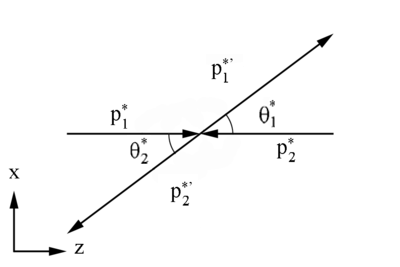Difference between revisions of "Limits based on Mandelstam Variables"
Jump to navigation
Jump to search

| Line 8: | Line 8: | ||
| − | <center><math> | + | <center><math>s \equiv \left({\mathbf P_1^*}+ {\mathbf P_2^{*}}\right)^2</math></center> |
| − | + | <center><math>s \equiv P_1^{*2}+2P_1^*P_2^*+P_2^{*2}</math></center> | |
| − | <center><math> \ | ||
| − | |||
| − | |||
| − | |||
| − | |||
| − | |||
| − | |||
Revision as of 16:46, 8 June 2017
Limits based on Mandelstam Variables
s Channel
In the center of mass frame, the momentum of the particles interacting are equal and opposite, i.e. . However, the 4-momentum still retains an energy component, which as a scalar quantity, can not be countered by another particle's direction of motion.
Similarly, by the relativistic definition of energy
where both particles have the same mass, this implies
t Channel
